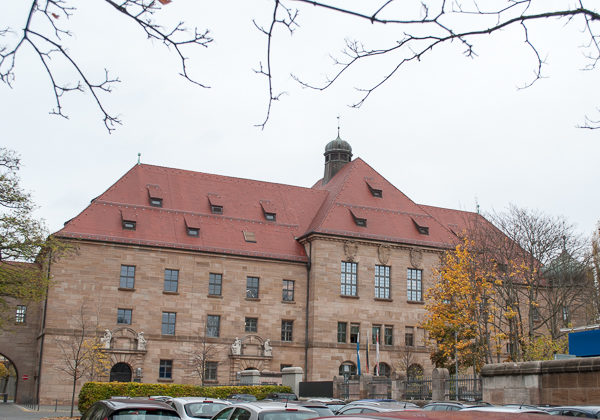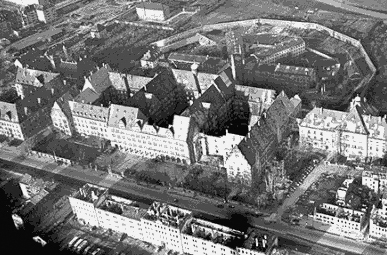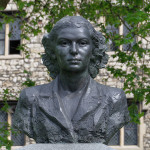
After visiting the Zeppelin Field, our last stop in Nuremberg was the Palace of Justice. Located to the east of the “old (medieval) city,” the building was one of the few in Nuremberg to survive the Allied bombings of early 1945. The Allies chose the small east wing of the Palace of Justice to hold what are now referred to as “The Nuremberg Trials.”
Despite what many people feel are the symbolic reasons for choosing Nuremberg to hold these trials, the real reason for their choice was much more pragmatic.
Iconic photographs of the first International Military Tribunal trial are well known and show the interior of the courtroom during the ten-month trial held between 20 November 1945 and 1 October 1946. The courtroom, open to the public (when not being used for trials), is known today as “Courtroom 600” and is easily recognizable even though it has been restored to its pre-trial appearance.
Why The Palace of Justice?
Yes, Nuremberg was a symbolic city to hold the trials of Nazi leaders and their accomplices. It was the site each year between 1927 and 1938 where the Reichsparteitage (Reich Party Congress) met and between 1933 and 1938 the annual National Socialist Party or Nazi rallies were held on the Party Rally Grounds (click here to read the blog Zeppelin Field). It was also here that the Nuremberg Laws were passed representing the first formal actions against Jews and a precursor to the Holocaust.

However, there were other pragmatic issues that made the city ideal for the trials. First, it was one of the only buildings still standing large enough to hold the trial as well as accommodating the staffs of the court and prosecution teams. Second, the complex included a prison adjacent to the Palace of Justice. A circular wall surrounded the prison complex adding additional security. Next to the prison was a gymnasium where on 16 October 1946, the condemned men were hanged (executions arising from verdicts of the subsequent Nuremberg Trials were carried out at Landsberg Prison in Bavaria). Read More Courtroom 600


